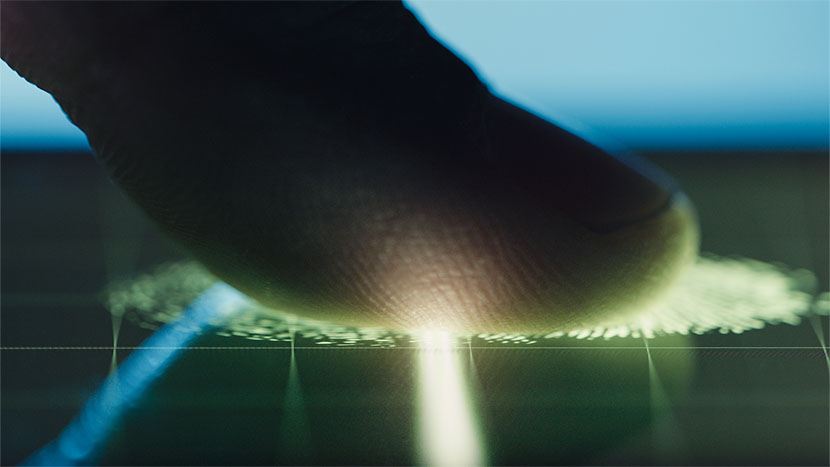Why Does Biometric Security Work Better?
We live in an era of escalating security concerns worldwide, and the need for foolproof authentication methods is beyond debate. According to recent reports by cybersecurity experts, there has been a staggering increase in cyber threats, with data breaches and identity theft incidents surging by over 14% in 2022.
In light of the vulnerability of traditional security measures like passwords and PINs, biometric authentication offers hope. Biometrics utilize the unique biological traits of individuals, such as fingerprints, iris patterns, DNA sequences, and facial characteristics, to provide a highly secure means of identity verification.
This advanced level of security ensures peace of mind, even when accessing accounts, such as your Uptown Pokies gaming profile, allowing for a seamless and protected gaming experience.
Overview of Biometric Technologies
Biometric technologies comprise various methods that leverage distinct biological characteristics for identity verification. These include:
Fingerprint Recognition
Among the most common biometric methods, fingerprint recognition relies on the unique patterns on an individual’s fingertips. Statistics reveal that fingerprint recognition systems achieve over 95% accuracy, making them highly reliable for authentication.
The cost-effectiveness of fingerprint recognition technology has led to its widespread adoption across various industries, including smartphones, access control systems, and law enforcement for criminal identification. Its ease of use and relatively low implementation costs make it a feasible choice for organizations seeking reliable yet affordable security solutions.
Iris Recognition
Recognized for its exceptional accuracy, iris recognition identifies individuals by analyzing the complex patterns in the iris. The accuracy rate for iris recognition is impressively high, at 99.59%, underscoring its reliability in high-security environments such as airports and government facilities.
One strength of iris recognition is its non-intrusive and contactless nature. Unlike fingerprint or DNA-based methods that might require physical contact, iris recognition can be done from a distance. This enhances convenience and minimizes hygiene concerns, making it suitable for applications like public spaces and healthcare settings.
DNA-Based Authentication
DNA-based authentication works on the principle that each individual’s DNA sequence is distinct, providing an unparalleled level of identification. Though still in the developmental stage for widespread usage due to complexities and ethical considerations, its potential in high-security scenarios is immense.
Beyond identity authentication, forensic DNA analysis plays a crucial role in criminal investigations, enabling law enforcement agencies to identify suspects, link individuals to crime scenes, and exonerate the innocent. DNA evidence has been instrumental in solving numerous cold cases and aiding in justice delivery worldwide.
Facial Recognition
Facial recognition technology analyzes facial features to identify individuals. With the advancement of deep learning, facial recognition systems have significantly improved in accuracy, achieving recognition rates of 99.97% in some instances.
In addition, integrating facial recognition in smartphones and personal devices enables convenient unlocking mechanisms and secure authentication for device access, applications, and payment authorization, simplifying everyday user interactions.
Advantages of Biometric Authentication
Biometric authentication offers a transformative solution to modern security challenges, and here are the reasons why:
Authentication Precision and Enhanced Security
The unique biological markers used in biometric systems, such as fingerprints, iris patterns, or facial characteristics, provide a highly secure means of identification. Biometric authentication systems boast significantly lower error rates than password-based systems, with an accuracy rate exceeding 90% in various applications.
For instance, the risk of unauthorized access is significantly reduced in access control systems utilizing biometric authentication. Only authorized individuals with verified biometric markers can gain entry. This ensures that sensitive areas or assets remain protected against unauthorized access or breaches.
Deterrent of Fraud and Identity Theft
Biometric authentication exceptionally discourages fraud and identity theft. Traditional authentication methods, such as passwords or identification cards, can be stolen or replicated. In contrast, biometric markers are nearly impossible to replicate, reducing the likelihood of fraudulent activities.
Financial institutions that have implemented biometric systems report a significant decline in unauthorized transactions and identity-related fraud, showcasing the effectiveness of biometrics in preventing fraudulent activities.
Convenience
The simplicity of using biometric markers, such as fingerprints or facial recognition, in everyday applications like unlocking smartphones or accessing personal devices provides a seamless and hassle-free authentication experience. Users don’t need to recall complex passwords or worry about forgetting or losing access credentials.
Plus, integrating biometric authentication in various sectors, such as healthcare, travel, and banking improves service delivery. For instance, patients in healthcare facilities can access their medical records using biometric authentication, eliminating cumbersome authentication procedures.
Improved User Trust and Confidence
Users often perceive biometric authentication as more secure than traditional authentication approaches like passwords or PINs. The unique biometric markers, such as fingerprints or facial features, instill confidence in users that their personal information and access are better safeguarded.
This perception of heightened security stems from the understanding that biometric data is incredibly difficult to replicate or falsify, thus reducing the likelihood of unauthorized access or identity theft.
Scalability and Adaptability
Biometric technologies offer flexibility, allowing implementation across various environments, from small-scale business settings to expansive public infrastructures. Whether deployed in educational institutions, healthcare facilities, or as part of citywide transportation systems, biometric authentication systems offer consistent levels of security.
In addition, these systems can be customized and fine-tuned to meet specific operational requirements. From integrating additional biometric markers or adapting to unique environmental factors, these systems can be tailored to ensure optimal performance and accuracy.
In the years ahead, biometric authentication is anticipated to play an even more integral role in securing digital identities and protecting against evolving cyber threats. Its potential remains a cornerstone for advanced and reliable authentication methods.


































































































